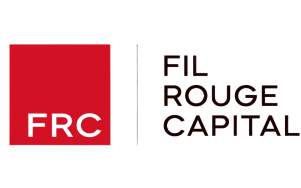

Introduction
The world of sustainable fashion is constantly evolving, with new innovations emerging at a rapid pace. From plant-based textiles to circular design strategies, the industry is embracing creative solutions to minimize its environmental impact. In this article, we'll spotlight some of the most exciting sustainable fashion innovations shaping the future of eco-friendly fashion.
Plant-Based Materials: Beyond Leather
While plant-based leather alternatives have been making waves in recent years, the potential for sustainable materials extends far beyond leather. Innovators are exploring a wide range of plant-based textiles, from mushroom mycelium to algae-based fabrics, to create eco-friendly textiles with unique properties.
At Sabant, our focus on plant-based materials has led us to develop Gin skin™ and Beer skin™, revolutionary leather alternatives made from alcohol production waste. As we continue to push the boundaries of what's possible with plant-based textiles, we're excited to see what other innovative solutions emerge in the coming years.
Some other promising plant-based materials include:
Piñatex: Made from pineapple leaf fibers, this durable and versatile material is a popular choice for fashion accessories and upholstery.
Hemp: One of the most sustainable natural fibers, hemp requires minimal water and pesticides to grow and can be used to create a wide range of textiles.
Banana fiber: Derived from banana plant stems, this strong and lightweight fiber can be used to create eco-friendly fabrics with a unique texture.

Plant-based leather made of gin distillation leftovers: Gin skin™
Circular Design: Closing the Loop
Circular design is another key area of sustainable fashion innovation. This approach aims to create products that can be easily disassembled, repaired, and recycled, minimizing waste and extending the life of garments. By designing with the end of life in mind, brands can significantly reduce their environmental impact.
Sabant's commitment to circularity is evident in our eco-friendly lifecycle, which ensures our plant-based materials can be safely biodegraded at the end of their useful life. As more brands adopt circular design principles, we can expect to see a shift towards more durable, versatile, and sustainable fashion.
Some exciting examples of circular design in action include:
Modular clothing: Garments designed with interchangeable components, allowing for easy repair, customization, and recycling.
Rentals and resale: Business models that promote the sharing and reuse of clothing, reducing the demand for new production.
Mono-material design: Creating garments from a single material to facilitate recycling and minimize waste.
Digital Fashion: The Virtual Frontier
Digital fashion is another exciting area of innovation, offering a way to create and consume fashion without the environmental costs associated with physical production. Through 3D design and augmented reality, brands can create virtual garments that consumers can "wear" digitally, reducing the need for resource-intensive manufacturing.
While Sabant's focus remains on creating tangible, sustainable materials, we recognize the potential of digital fashion to complement and enhance eco-friendly fashion choices. As the virtual and physical worlds continue to merge, digital fashion innovations will play an increasingly important role in shaping the future of sustainable fashion.
Some notable examples of digital fashion include:
Virtual fashion shows: Brands like Hanifa and The Fabricant have showcased their collections through immersive digital experiences, reducing the environmental impact of traditional fashion events.
Digital clothing: Platforms like DressX allow consumers to purchase and "wear" digital garments, creating new opportunities for self-expression and experimentation.
Virtual try-on: Augmented reality technology enables consumers to virtually try on clothes, reducing the need for physical samples and minimizing returns.
Biotechnology: Harnessing Nature's Potential
Biotechnology is another frontier in sustainable fashion innovation, leveraging the power of living organisms to create eco-friendly materials and processes. From lab-grown leather to biodegradable dyes, biotechnology offers a wealth of possibilities for reducing the industry's environmental impact.
As a leader in plant-based materials, Sabant is keenly interested in the potential of biotechnology to revolutionize sustainable fashion. By harnessing nature's incredible capacity for regeneration and adaptation, we can create materials that are not only sustainable but also highly performant and aesthetically pleasing.
Some promising applications of biotechnology in fashion include:
Mycelium leather: Companies like Bolt Threads and MycoWorks are using mushroom mycelium to create leather-like materials that are biodegradable and cruelty-free.
Algae-based dyes: Sustainable dyeing processes using algae as a pigment source, reducing the need for harmful synthetic dyes.
Biofabrication: Growing materials like spider silk and cellulose using living organisms, creating new possibilities for sustainable textile production.

Collaborative Innovation and Open-Source Initiatives
Collaboration and knowledge-sharing are essential for driving sustainable fashion innovation. Open-source initiatives and cross-industry partnerships are enabling brands, researchers, and innovators to work together towards common goals, accelerating the development of new materials and technologies.
Some notable examples of collaborative innovation in sustainable fashion include:
Fashion for Good: A global initiative that brings together brands, innovators, and funders to accelerate the transition towards a circular fashion industry.
The Sustainable Angle: A non-profit organization that connects fashion professionals with sustainable material innovations through its Future Fabrics Expo and online resources.
Ellen MacArthur Foundation: A leading voice in the circular economy movement, the foundation works with fashion brands and stakeholders to drive the adoption of circular design principles and business models.
Conclusion
The future of sustainable fashion is bright, with innovations emerging across the industry to drive positive change. From plant-based textiles to circular design, digital fashion, and biotechnology, the possibilities are endless. At Sabant, we're proud to be at the forefront of this revolution, crafting sustainable materials that showcase the incredible potential of eco-friendly innovation.
As we look ahead, we're excited to see how these innovations will continue to reshape the fashion landscape for a greener, more sustainable future. By embracing collaboration, transparency, and a commitment to continuous improvement, we can create a fashion industry that is not only stylish but also responsible, ethical, and kind to the planet.
We invite you to join us on this journey, exploring the cutting-edge innovations that are redefining what's possible in sustainable fashion. Together, we can create a future where fashion is a force for good, driving positive change and inspiring a more sustainable way of life.







.png&w=3840&q=75)







